This week’s theme is human capital and its maximization within the bioeconomy. The following authors focus on the human body as a source of economic profit that has the potential to both help and harm economies. Throughout these readings I was constantly reminded of the movie “Repo Man” which focuses on the bioeconomy of human organs which can be rented, sold and replicated (and in the movie; repossessed).

The article “Born to Lose: Health Inequality at Birth” by Nancy Folbre
focuses on the idea that children in the United States are either “born to win” or “born to lose”. Folbre argues that children who suffer health disadvantages at birth have a reduced likelihood of economic success in life. She cites low birth weights as an example of predicting not only future health outcomes, but also how economists have been able to predict future earning problems related to birth weight. It has been demonstrated that many of the elements that underlie inequality are linked to characteristics in the physical environment and directly to toxic exposures. Folbre cites Professor Janet Currie’s work that illustrates how children of color (Blacks and Latinos) are at a higher risk of being born underweight and to mothers living closely to toxic environments. Unfortunately, many of these mothers are poor and without education, so they are less likely to be able to live in safer locations and are less likely to identify the hazards that surround them in their daily lives. In short, the article argues that if factories had to pay the cost of pollution instead of the children who ingest the toxins then the “pricing problem” would be quickly resolved. In addition, changes would occur more quickly if the “chief executives of these companies‒and their children‒ had to bear the cost. But these adults are free to choose where to live and what to breath. And their children are, for the most part, born to win” (3).
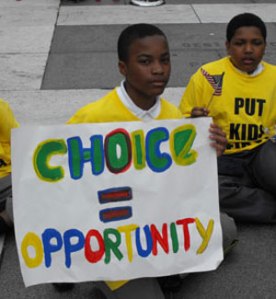
The second article entitled “Killing Me Softly: The Fetal Origins Hypothesis” by Douglas Almond and Janet Currie begin by discussing the idea that in the 1950’s epidemiologists believed that the fetus was a “perfect parasite” that was protected from national damage that could be inflicted by the other. They also mention the belief that the placenta was once regarded as the “perfect filter” which protected the fetus from harmful substances in the mother’s body (153). It was because of these beliefs that the so called “baby boomers” were told that it was okay to smoke and drink while pregnant. These two authors review the various literatures that surround the “fetal origins hypothesis” which suggests that the nine months in utero are some of the most crucial periods for a person’s life because it shapes their abilities, health trajectories and financial earnings. The fetal origins hypothesis combines three ideas: (1) the effects of fetal conditions are persistent, (2) the health effects can remain latent for many years, (3) the hypothesized effects reflect a specific biological mechanism, “fetal programming, possibly through effects on the environment on the epigenome” (154). They state that the epigenome can be understood as a series of switches that cause certain aspects of the genome to be expressed or not.

Almond and Currie discuss the literature surrounding the “thalidomide episode” which was proscribed to women to help with morning sickness. It was this drug that demonstrated that the placenta is not an impervious barrier and resulted in children being born without arms and legs. They also discussed the research on “fetal alcohol syndrome” which had long been thought to be hereditary, but is now identified as being inflicted by the mother’s alcoholism. Lastly, Almond and Currie discuss the research on the latent effects of “health shocks” on the fetus. An example of this is found in the discussion of famine which is known to impact birth weight, fertility and maternal blood pressure (155). Early research on health shocks focused on larger shocks such as famine, whereas, recent studies have focused more on a variety of less subtle health shocks during the fetal period. Ultimately, the ideal measure “would be sensitive for fetal insults at all stages of pregnancy, be easy to measure, and be available to all mothers (or at least a large sample of mothers) in a cohort” (158).
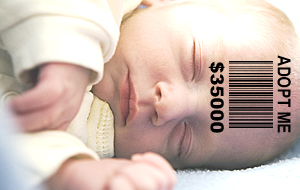
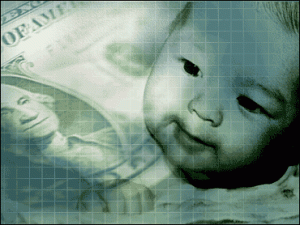
In conclusion, the lack of an ideal measure for fetal health has not kept economists from addressing the hypothesis. The economic focus on identification strategies has enabled economists to “sidestep the question of finding a better measure of fetal health” (158). After all, the entire reason that economists have become interested in the fetal origins hypothesis is because it has implications for the modeling of human capital development. Our authors caution that even when measuring the implications on human capital and fetal health, we must keep in mind that long-term outcomes can be the product of both biological and social factors (160). In closing Almond and Currie identify four “thematic” contributions from economists: (1) analysis of non- health endpoints, (2) improved identification strategies, (3) consideration of relatively mild and more-varied prenatal exposures, and (4) formalization of the tension between “scarring” and selective mortality in ecological date (160-161). They end by identifying current limitations in research and suggesting five avenues for future research.
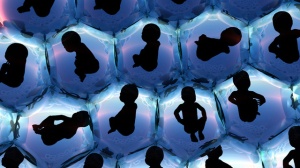
The third article “The Biopolitics of Reproduction: Post-Fordist Biotechnology and Women’s Clinical Labour” by Catherine Waldby and Melinda Cooper discusses the reality that women in developing nations are delaying child birth and having fewer children which has raised political and economic concerns regarding the working and aging populations. Some of these concerns consist of depressed economic growth, increased demands in welfare and healthcare and a reduction in tax revenues (57). As a result of these concerns states that are a part of the Organization for Economic Co-Operation and Development (OECD) have created policies and incentives to encourage women to have more children, but these policies are proving ineffective as families are picking economic security and careers over larger families. It is this shift that Waldby and Cooper identify as being complexly intertwined with the transformation in the biopolitical ordering of life. Waldby and Cooper state that “these transformations can be summarized as the neoliberalisation of life, both in the sense of the everyday life of citizens, and the biological life of populations. The decline in reproduction demonstrates these two forms very succinctly” (57).

These authors argue that the Fordist model of family life (male breadwinner, family wage, full-time mothering) is in the past and has faded away due to the need for a two-wage family. They maintain that the processes of reproduction have been deregulated, privatized and made available for investment and development. This investment takes two forms, the in vitro fertilization (IVF) baby (i.e. medically assisted reproduction) and new technologies in regenerative medicine relying on the female reproductive biology as a generative site (embryonic stem cell research, savior siblings, SCNT, cord blood banking) (58). Waldby and Cooper assert that the compliance, negotiability and general agency of female populations is now a central issue in the development of the “reproductive bioeconomy”. They focus on the global biopolitics of contemporary reproduction regarding the human egg (oocyte) markets in Eastern Europe and North America. The participation of women in the sale of their eggs involves a form of bodily reproductive labour that has only recently become “technologised” and standardized on a global scale.
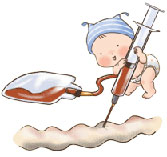
In short, “the contemporary permutation of reproduction, biomedical and clinical labour lie at the heart of the neoliberal restructuring of capital. What neoliberalism seeks to make available, in other words, is not merely a permanent surplus of labour power but also a surplus of reproductively, a reserve of low-cost suppliers of reproductive services and tissues who perform unacknowledged reproductive labour within the lowest echelon of the bioeconomoy” (60). Waldby and Cooper seek to make this labor and these contributions more visible and to identify the implications of these shifts in order to improve justice and equity for these tissue providers within the bioeconomy. In conclusion, women’s’ reproductive participation must been understood as a form of labor and the contractual use of women’s’ bodies is a exploitive social practice (typically poor women participate), but in understanding reproductive participation in terms of labor it strengthens women’s’ rights over their material and bodily integrity because it resembles intellectual labor which is more fully protected in the bioeconomy (67).

The last article “Strange Circulations: The Blood Economy of Rural China” by Anna Anagnost also explores the themes of bioeconomy and human capital. This author discusses the commodification of blood in China’s rural countryside and how it led to the spread of HIV and other diseases. Anagnost focuses on this new form of circulation (blood as human capital) and analyzes what it has to tell us about the terms of the rationalities of these exchanges between the agricultural economy and national development of China. Anagnost utilizes Marx’s imagery of blood sucking in regards to the discussion of the extraction of surplus value. She ultimately argues that the Chinese migrant’s desire to be recognized as a body of value through the power to consume pulls the migrant into the market economy as a willing body for exploitation. The bankrupting of the rural Chinese economy devalued rural life as value coding the rural body as being of low quality. The author uses the film “Ermo” which portrays the sale of blood in the 1990’s in China as a medium to discuss the circulation of blood value as it moves globally noting that it also parallels the history of Chinese economic reforms. Anagnost also ultimately argues that the vampire like capital which Marx describes can be usefully applied to demonstrate the ways in which value is drawn from the Chinese countryside “through its capacity to absorb the externalized costs in reproduction of a flexible and cheap supply of labour, while also setting up the possibility for the accumulation of new forms of biovalue” (510). She argues that “The vampire can be used as a figure for the way in which capital renews itself by drawing its vitality from the countryside as the hidden source of rapid economic growth, it is all the more useful for exploring the workings of the blood economy” (521).
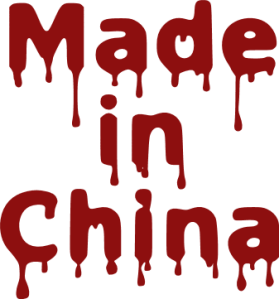

Anagnost’s work is very interesting and very compelling. The fear of HIV and Aids is still very real in China and the legacy of mandated quota systems imposed on the urban and rural poor under the Maoist period is still alive today. Three years ago I spent a little less than a month in China where I observed, even before I left the U.S., limitations on the people both Chinese and foreign, who have been diagnosed with HIV. In fact, if you have HIV you are not allowed to visit China and you are also not allowed to leave. The government basically put an invisible net around the entire nation in hopes of stopping the spread of the disease. The spread of HIV in China suggests, as Anagnost argues, that what has been produced by biotechnological enterprise is a new economy of life and death that forces us to consider how the active production of inequality has been the condition of possibility. It is also a form of revenge via the consequences of commodifying life.

Biopolitics Week 12
Filed under Uncategorized
